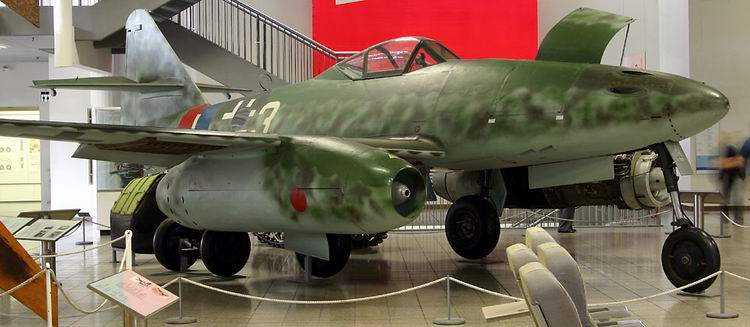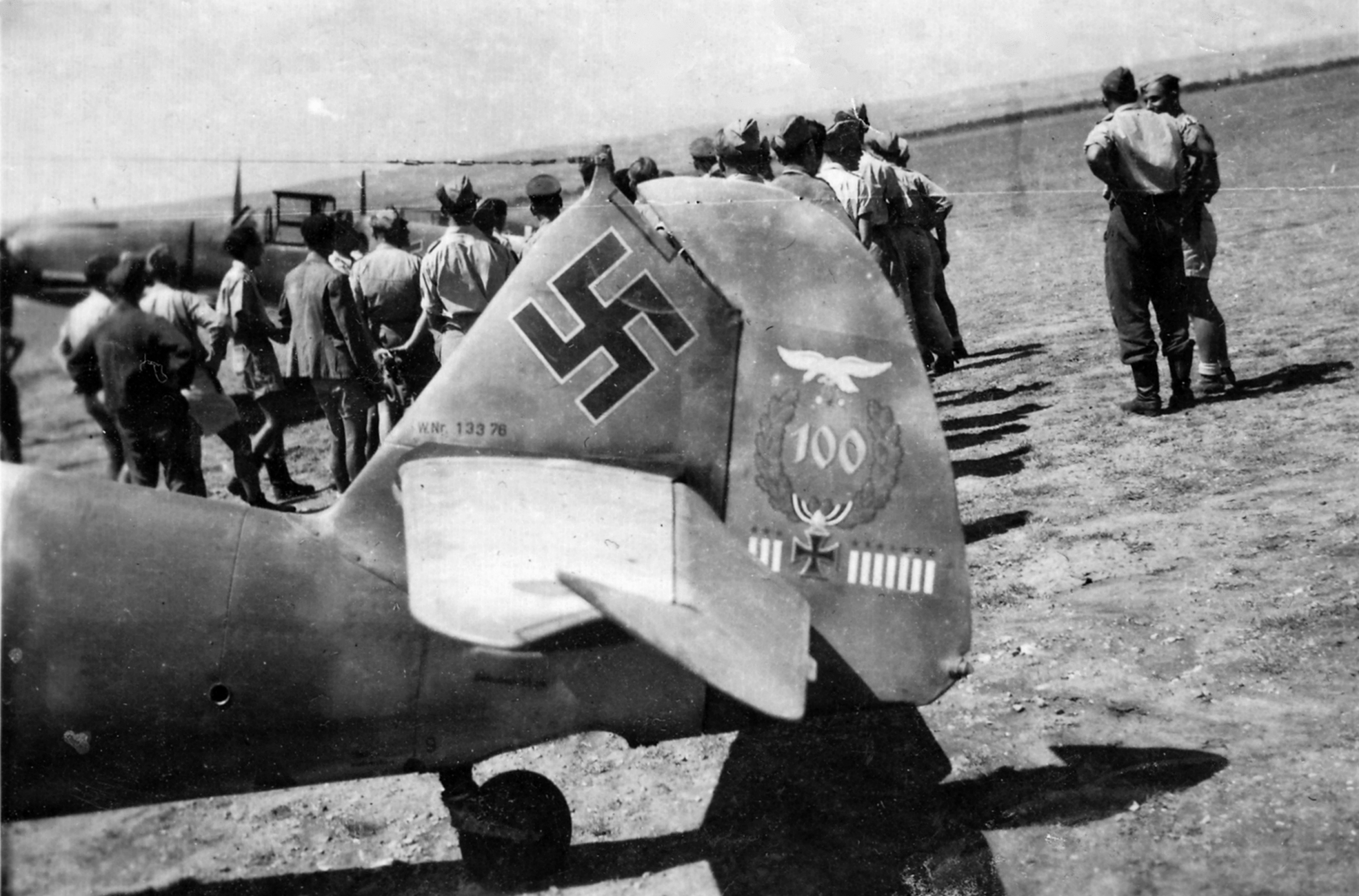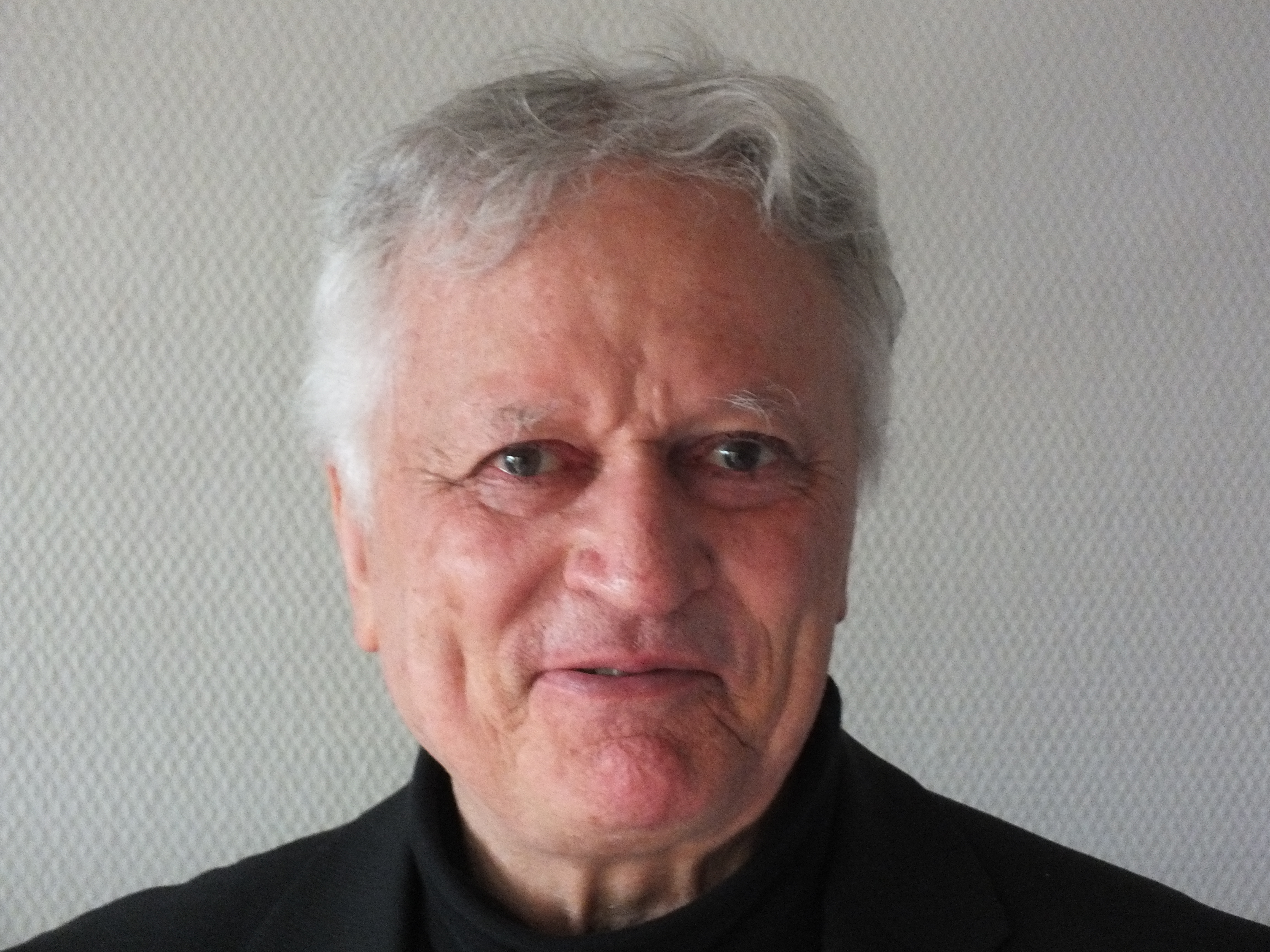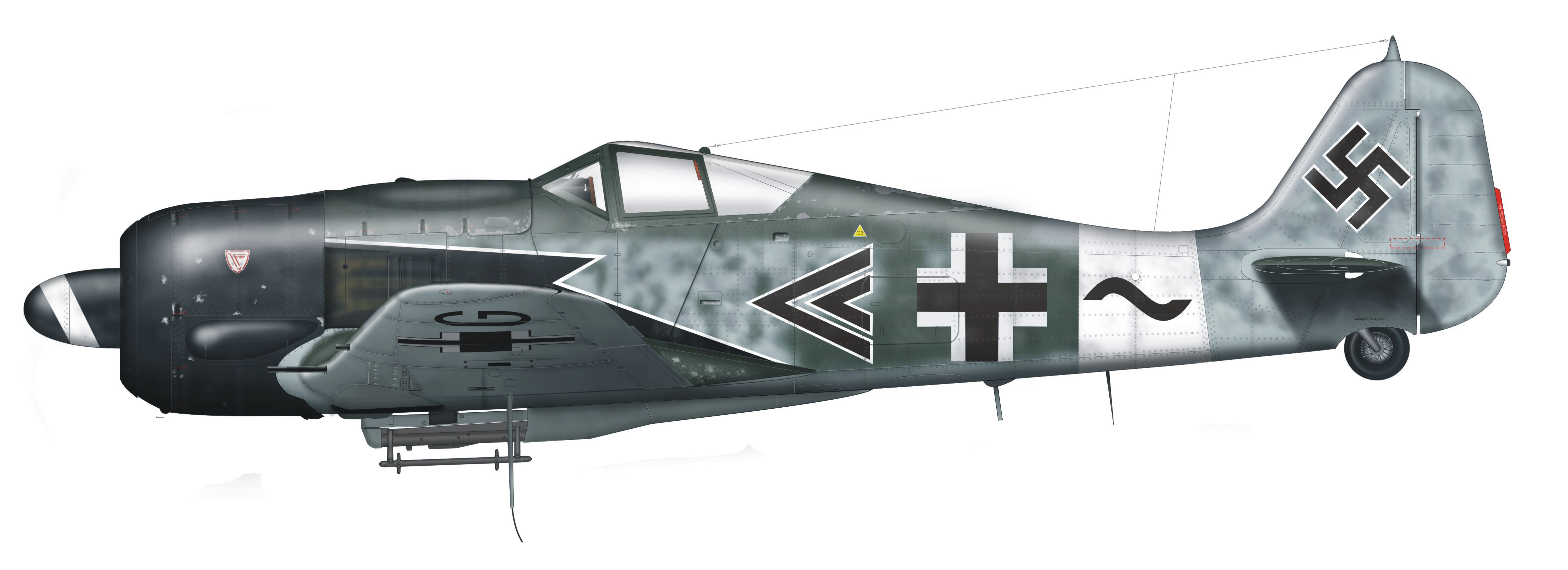|
Ergänzungs-Jagdgeschwader 2
A Ergänzungs-Jagdgeschwader (EJG) were Luftwaffe replacement training units which were part of a larger operational Jagdgeschwader. The Germans were sometimes forced to undertake operations and training simultaneously. In 1944, the Luftwaffe formed two of these units, EJG 1 and EJG 2, by combining various training and experimental units. Its commanders included Viktor Bauer and Werner Andres. Ergänzungs-Jagdgeschwader 1 The ''Geschwader'' EJG 1 was formed in early 1944 from ''Ergänzungs-Jagdgruppe West'', ''Ergänzungs-Jagdgruppe Nord'' and ''Ergänzungs-Jagdgruppe Ost''. The '' Geschwaderstab'' (headquarters unit) was based in Märkisch Friedland, present-day Mirosławiec in Poland, while the '' Staffeln'' (squadrons) were based on airfields in Pomerania, Brandenburg, Lausitz, present-day Lusatia, and Silesia. Initially, the unit was conceived as a training unit for fighter pilots. The deteriorating war situation forced Luftwaffe training units into combat oper ... [...More Info...] [...Related Items...] OR: [Wikipedia] [Google] [Baidu] |
Luftwaffe
The Luftwaffe () was the aerial warfare, aerial-warfare branch of the before and during World War II. German Empire, Germany's military air arms during World War I, the of the Imperial German Army, Imperial Army and the of the Imperial German Navy, Imperial Navy, had been disbanded in May 1920 in accordance with the terms of the 1919 Treaty of Versailles, which banned Germany from having any air force. During the interwar period, German pilots were trained secretly in violation of the treaty at Lipetsk (air base), Lipetsk Air Base in the Soviet Union. With the rise of the Nazi Party and the repudiation of the Versailles Treaty, the Luftwaffe's existence was publicly acknowledged and officially established on 26 February 1935, just over two weeks before open defiance of the Versailles Treaty through German rearmament and conscription would be announced on 16 March. The Condor Legion, a Luftwaffe detachment sent to aid Nationalist faction (Spanish Civil War), Nationalist for ... [...More Info...] [...Related Items...] OR: [Wikipedia] [Google] [Baidu] |
Messerschmitt Me 262
The Messerschmitt Me 262, nicknamed (German for "Swallow") in fighter versions, or ("Storm Bird") in fighter-bomber versions, is a fighter aircraft and fighter-bomber that was designed and produced by the German aircraft manufacturer Messerschmitt. It was the world's first operational jet-powered fighter aircraft and one of two jet fighter aircraft types to see air-to-air combat in World War Two, the other being the Heinkel He 162. The design of what would become the Me 262 started in April 1939, before World War II. It made its maiden flight on 18 April 1941 with a piston engine, and its first jet-powered flight on 18 July 1942. Progress was delayed by problems with engines, metallurgy Metallurgy is a domain of materials science and engineering that studies the physical and chemical behavior of metallic elements, their inter-metallic compounds, and their mixtures, which are known as alloys. Metallurgy encompasses both the ..., and interference from Luftwaffe chie ... [...More Info...] [...Related Items...] OR: [Wikipedia] [Google] [Baidu] |
Adolf Galland
Adolf Josef Ferdinand Galland (19 March 1912 – 9 February 1996) was a German Luftwaffe general and flying ace who served throughout the Second World War in Europe. He flew 705 combat missions and fought on the Western Front and in the Defence of the Reich. On four occasions, he survived being shot down, and he was credited with 104 aerial victories, all of them against the Western Allies. Galland, who was born in Westerholt, Province of Westphalia, Kingdom of Prussia, in the German Empire, became a glider pilot in 1929 before he joined the Luft Hansa. In 1932, he graduated as a pilot at the '' Deutsche Verkehrsfliegerschule'' (German Commercial Flyers' School) in Braunschweig before applying to join the Reichswehr of the Weimar Republic later in the year. Galland's application was accepted, but he never took up the offer. In February 1934, he was transferred to the Luftwaffe. In 1937, during the Spanish Civil War, he volunteered for the Condor Legion and flew ground attac ... [...More Info...] [...Related Items...] OR: [Wikipedia] [Google] [Baidu] |
Jagdverband 44
__NOTOC__ ''Jagdverband'' 44 (JV 44) was a German Luftwaffe special operations unit during World War II. It was formed during the last months of World War II to operate the Messerschmitt Me 262 jet fighter. History The commander of JV 44 was General Adolf Galland, the former '' General der Jagdflieger'' (General of Fighter pilots) who had recently been sacked from his staff post by Hermann Göring for criticizing the operational policies, strategic doctrine, and tactics mandated by the Luftwaffe High Command in the " Fighter Pilots' Revolt". Galland was charged with setting up a small Me 262 unit to demonstrate the capabilities of the jet fighter, as Göring taunted him to "prove what you've always said about the 262's great potential." Additionally, Göring saw this as a way of possibly disposing of Galland and fellow members of the Fighter Pilot's Revolt, rather than forcing their suicides, which had been overruled by Hitler. JV 44 comprised a core of experienced pilots ( ... [...More Info...] [...Related Items...] OR: [Wikipedia] [Google] [Baidu] |
Heinrich Bär
Oskar-Heinrich "Pritzl" Bär (; 25 May 1913 – 28 April 1957) was a German Luftwaffe flying ace who served throughout World War II in Europe. Bär flew more than one thousand combat missions, and fought in the Western, Eastern and Mediterranean theatres. On 18 occasions he survived being shot down, and according to records in the German Federal Archives, he claimed to have shot down 228 enemy aircraft and was credited with 208 aerial victories, 16 of which were in a Messerschmitt Me 262 jet fighter. Sources credit him with 220 – 96 on Eastern Theatre and 124 on Western Theatre – up to 222 aerial victories may also be possible. Bär, a native of Saxony, joined the Reichswehr in 1934 and transferred to the Luftwaffe in 1935. Serving first as a mechanic, then as a pilot on transport aircraft, he was informally trained as a fighter pilot. He claimed his first aerial victory in September 1939 on the French border. By the end of the Battle of Britain, his tally of victorie ... [...More Info...] [...Related Items...] OR: [Wikipedia] [Google] [Baidu] |
Lechfeld Air Base
Lechfeld Air Base is a German Air Force (''Luftwaffe'') base located 1 km east of Lagerlechfeld in Bavaria, about 20 km south of Augsburg on the Bundestrasse 17. It was the home of Training Division A of the School of Management Assistance, and of 32 Fighter Bomber Wing (''Jagdbombergeschwader 32''), part of the Luftwaffe's 1st Air Division. The two squadrons based there flew the Panavia Tornado until 2013. There was a plan to use Lechfeld as Germany's second base for the Airbus A400M Atlas transport aircraft. History In 1912, the German Army's military flight operations started at Lechfeld, but were forbidden after the First World War. Flight operations were resumed in 1934 and a flight school was opened. The Messerschmitt Works at Augsburg used Lagerlechfeld also as a test airfield. On May 22, 1943, at Lechfeld, Adolf Galland made his first flight in the Messerschmitt Me 262, a highly advanced twin engine jet fighter. He told Hermann Göring, "It felt as if angels ... [...More Info...] [...Related Items...] OR: [Wikipedia] [Google] [Baidu] |
Ludwigslust
Ludwigslust () is a central castle town of Mecklenburg-Vorpommern, Germany, 40 km south of Schwerin. Since 2011 it has been part of the Ludwigslust-Parchim district. Ludwigslust is part of the Hamburg Metropolitan Region. The former royal residential town is known for its rich heritage, especially the famed Ludwigslust Palace, known as ''Versailles of the North''. History In 1724 Prince Ludwig, the son of Frederick, Duke of Mecklenburg, decided to build a hunting lodge near a small hamlet called Klenow. Later, after his succession to the Dukedom, this became his favourite residence and he named it accordingly ''Ludwigslust'' ("Ludwig's pleasure/desire"). In 1765 Ludwigslust became the capital of the duchy in place of Schwerin. The town was enlarged by a residential palace (the castle). This situation continued until 1837, when Grand Duke Paul Friedrich returned the capital status to Schwerin. The Wöbbelin concentration camp—sometimes referred to as ''Ludwigslust ... [...More Info...] [...Related Items...] OR: [Wikipedia] [Google] [Baidu] |
Berlin
Berlin ( ; ) is the Capital of Germany, capital and largest city of Germany, by both area and List of cities in Germany by population, population. With 3.7 million inhabitants, it has the List of cities in the European Union by population within city limits, highest population within its city limits of any city in the European Union. The city is also one of the states of Germany, being the List of German states by area, third smallest state in the country by area. Berlin is surrounded by the state of Brandenburg, and Brandenburg's capital Potsdam is nearby. The urban area of Berlin has a population of over 4.6 million and is therefore the most populous urban area in Germany. The Berlin/Brandenburg Metropolitan Region, Berlin-Brandenburg capital region has around 6.2 million inhabitants and is Germany's second-largest metropolitan region after the Rhine-Ruhr region, as well as the List of EU metropolitan areas by GDP, fifth-biggest metropolitan region by GDP in the European Union. ... [...More Info...] [...Related Items...] OR: [Wikipedia] [Google] [Baidu] |
Piston Engine
A reciprocating engine, more often known as a piston engine, is a heat engine that uses one or more Reciprocating motion, reciprocating pistons to convert high temperature and high pressure into a Circular motion, rotating motion. This article describes the common features of all types. The main types are: the internal combustion engine, used extensively in motor vehicles; the steam engine, the mainstay of the Industrial Revolution; and the Stirling engine for niche applications. Internal combustion engines are further classified in two ways: either a spark-ignition engine, spark-ignition (SI) engine, where the spark plug initiates the combustion; or a compression-ignition engine, compression-ignition (CI) engine, where the air within the cylinder is compressed, Adiabatic process, thus heating it, so that the heated air ignites fuel that is injected diesel engine, then or hot-bulb engine, earlier.''Thermodynamics: An Engineering Approach'' by Yunus A. Cengal and Michael A. Boles ... [...More Info...] [...Related Items...] OR: [Wikipedia] [Google] [Baidu] |
Focke-Wulf Fw 190
The Focke-Wulf Fw 190, nicknamed ''Würger'' (Shrike) is a German single-seat, single-engine fighter aircraft designed by Kurt Tank at Focke-Wulf in the late 1930s and widely used during World War II. Along with its well-known counterpart, the Messerschmitt Bf 109, the Fw 190 became the backbone of the (Fighter Force) of the . The twin-row BMW 801 radial engine that powered most operational versions enabled the Fw 190 to lift larger loads than the Bf 109, allowing its use as a day fighter, fighter-bomber, ground-attack aircraft and to a lesser degree, night fighter. The Fw 190A started flying operationally over France in August 1941 and quickly proved superior in all but turn radius to the Supermarine Spitfire (early Merlin-powered variants)#Mk V (Mk V (Types 331, 349 and 352)), Spitfire Mk. V, the main front-line fighter of the Royal Air Force (RAF), particularly at low and medium altitudes. The 190 maintained its superiority over Allies of World War II, Allied fighters until ... [...More Info...] [...Related Items...] OR: [Wikipedia] [Google] [Baidu] |
Messerschmitt Bf 109
The Messerschmitt Bf 109 is a monoplane fighter aircraft that was designed and initially produced by the Nazi Germany, German aircraft manufacturer Messerschmitt#History, Bayerische Flugzeugwerke (BFW). Together with the Focke-Wulf Fw 190, the Bf 109 formed the backbone of the ''Luftwaffe's'' fighter force during the World War II. It was commonly called the Me 109 by Allied aircrew and some German aces/pilots, even though this was not the official model designation. The Bf 109 was designed by Willy Messerschmitt and Robert Lusser, who worked at BFW during the early to mid-1930s. It was conceived as an interceptor aircraft, interceptor. However, later models were developed to fulfill multiple tasks, serving as Escort fighter, bomber escort, fighter-bomber, day fighter, day-, night fighter, night-, all-weather fighter, ground-attack aircraft, and aerial reconnaissance aircraft. It was one of the most advanced fighters when the fighter first appeared, being furnished with an all-me ... [...More Info...] [...Related Items...] OR: [Wikipedia] [Google] [Baidu] |







